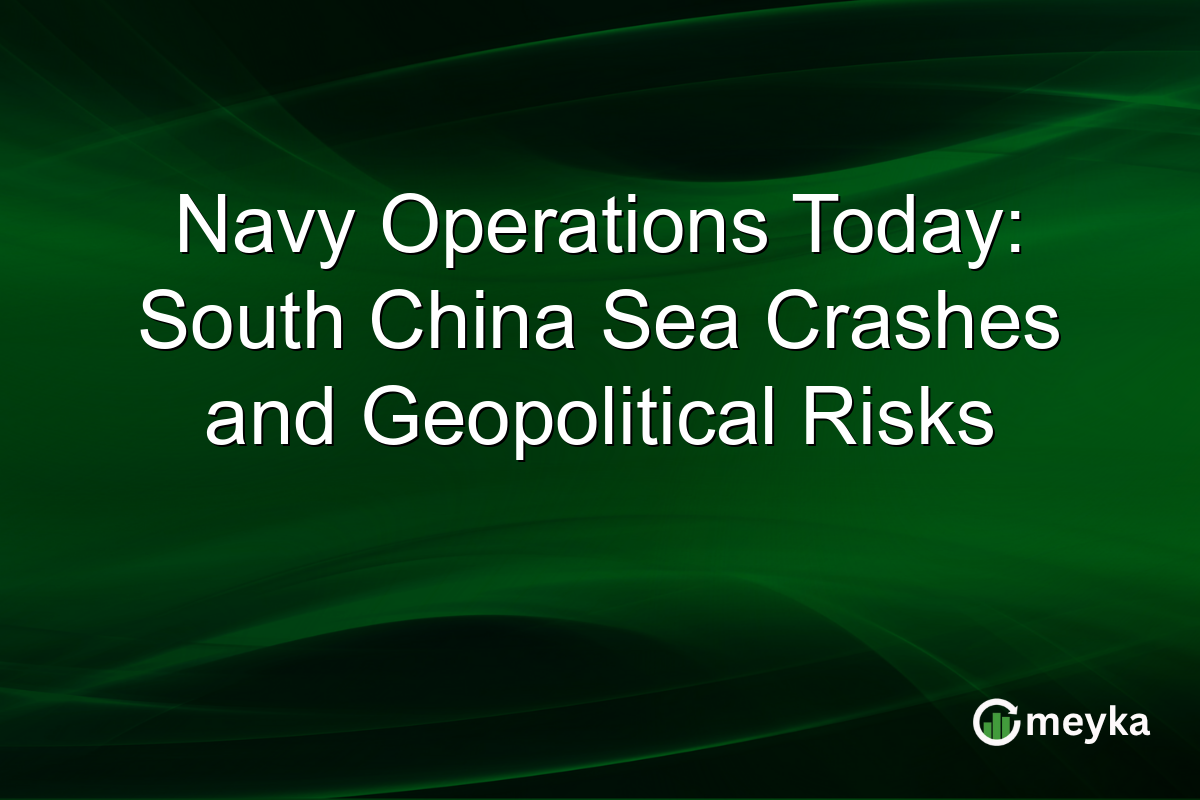Navy Operations Today: South China Sea Crashes and Geopolitical Risks
Recent incidents involving a Navy helicopter and fighter jet crash in the South China Sea have spotlighted growing geopolitical tensions and operational risks. These events coincide with the USS Nimitz’s return from a crucial deployment in the Middle East, emphasizing the strategic significance of naval presence in this disputed region. As the South China Sea continues to be a focal point for international disputes, the role of the U.S. Navy is increasingly critical to maintaining stability and demonstrating power projection.
Incidents in the South China Sea: A Summary
On October 27, 2025, two significant Navy incidents occurred within 30 minutes of each other in the South China Sea. A Navy fighter jet and a helicopter crashed during routine operations. This alarming sequence of events underscores the operational hazards present in one of the world’s most contested regions. Military experts speculate whether such accidents might be symptomatic of deeper challenges in conducting safe naval operations amid intensifying regional scrutiny. Read more about these incidents.
Geopolitical Implications of Naval Presence
The South China Sea is a critical corridor for international maritime trade and a focal point of geopolitical rivalry. The recent crashes underscore the complexity of maintaining operational security in such a sensitive zone. The presence of the USS Nimitz highlights the U.S. commitment to safeguarding freedom of navigation and deterring aggression. However, with China’s increasing military activities, the risk of confrontations remains high. These operations serve not only as a deterrent but also a statement of sustained U.S. interest in the region.
USS Nimitz Deployment: Strategic Importance
The USS Nimitz’s return from the Middle East marks its refreshed role in Pacific operations. Its deployment reflects broader strategic objectives in countering regional threats. The carrier’s presence exemplifies U.S. naval capabilities and readiness, a critical factor in ensuring allies’ confidence. Importantly, this maneuver showcases the Navy’s versatility and rapid response capability—a message to friend and foe alike that the U.S. can project power efficiently and effectively across multiple theaters.
Final Thoughts
The recent Navy incidents in the South China Sea amplify the urgent need for strategic preparedness amidst growing geopolitical tensions. The role of naval operations is pivotal—both as a stabilizing force and a symbol of military readiness in contested regions. As challenges persist, these operations reaffirm essential international norms and regional alliances. Looking forward, maintaining a robust naval presence will be crucial in balancing power dynamics and ensuring peace in the South China Sea and beyond.
FAQs
The exact causes of the Navy helicopter and fighter jet crashes remain under investigation. These incidents highlight operational risks associated with complex and high-pressure environments like the South China Sea.
The USS Nimitz serves as a critical component in projecting U.S. naval power, supporting freedom of navigation, and deterring potential threats in the South China Sea. Its deployment ensures regional stability and demonstrates military readiness.
The South China Sea is strategically significant due to its crucial maritime trade routes and rich natural resources. Territorial disputes and military activities by regional powers increase tensions in the area.
Disclaimer:
This is for information only, not financial advice. Always do your research.






